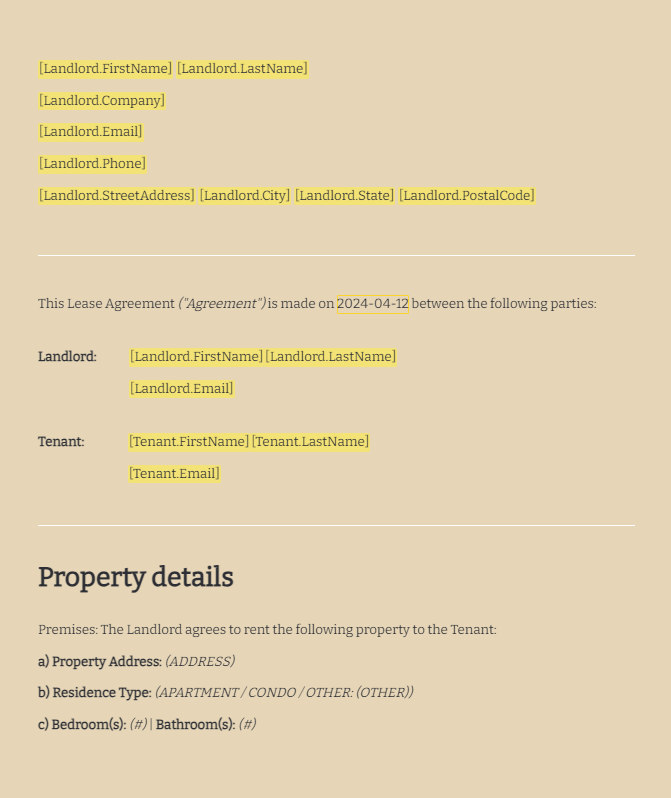Rental Lease Agreement Form
Whether you're a tenant, landlord, or property management company, understanding and correctly filling out a Rental Lease Agreement is crucial for legal compliance and protecting your rights. In order to access a standard Rental Lease Agreement template for free, click the button given below. This Rental Lease Agreement documentation is essential for ensuring clear terms of tenancy, responsibilities, and rights of both landlords and tenants, thereby maintaining compliance with housing laws and regulations.
Save time, avoid headaches, and ensure compliance effortlessly with current version of Rental Lease Agreement Form. With our streamlined process, you'll have your form in hand within moments, giving you the peace of mind to focus on what truly matters – your business.

Understanding the Form
Stay Compliant, Stay Secure: Secure Your Rental Lease Agreement Form Today
Are you tired of endless paperwork and bureaucracy when it comes to forms like this?It's frustrating and time-consuming, isn't it? Spending precious hours navigating through confusing websites, waiting in long queues, or worse, risking penalties for non-compliance.But what if there was a way to bypass all that hassle? Imagine having your downloadable rental lease agreement form at your fingertips, ready to download instantly with just a click.The Rental Lease Agreement Form 2024, updated for the year 2024, acts as a binding document between a landlord and a tenant, outlining the terms and conditions of renting property. Whether you're leasing residential or commercial property, executing a Rental Lease Agreement is a critical step in formalizing the rental arrangement. This agreement covers various aspects such as rent amount, payment schedule, security deposit details, and lease duration, among others.How to Fill Out a Rental Lease Agreement Form
Form Rental Lease Agreement Form Instructions
- Identify the Parties: Include full names and contact details of both the landlord and tenant(s).
- Property Description: Provide a detailed description of the rental property, including its address and type.
- Lease Terms: Specify lease duration, rent amount, payment schedule, and security deposit details.
- Utilities and Maintenance: Clarify which utilities are included, and outline maintenance responsibilities.
- Rules and Regulations: Detail any property-specific rules, such as pet policies, noise restrictions, and guest policies.
- Termination Conditions: Explain how the lease can be terminated or renewed, including notice requirements.
- Signatures: Ensure both parties sign and date the agreement, possibly in the presence of witnesses or a notary, depending on local requirements.
Frequently Asked Questions
A Rental Lease Agreement Form is a legally binding document between a landlord and a tenant that outlines the terms and conditions of renting property. It specifies the rights and responsibilities of both parties regarding the rental of residential or commercial property.
The Rental Lease Agreement Form is used to establish a clear understanding between the landlord and the tenant about the rental arrangement. It includes details such as the duration of the lease, monthly rent, security deposit, and rules regarding the use of the property. This form serves as a protective measure for both parties, ensuring that the landlord receives payment and the tenant knows their rights and obligations.
You can obtain a Rental Lease Agreement Form from various sources, including real estate agencies, legal services websites such as Blue Notary, and property management companies. Many of these sources offer customizable templates that can be tailored to meet specific requirements of both landlords and tenants.
Both the landlord (or the property manager acting on behalf of the landlord) and the tenant are required to fill out and sign the Rental Lease Agreement Form. This ensures that both parties have agreed to the terms and conditions of the lease, making it a legally enforceable document.


